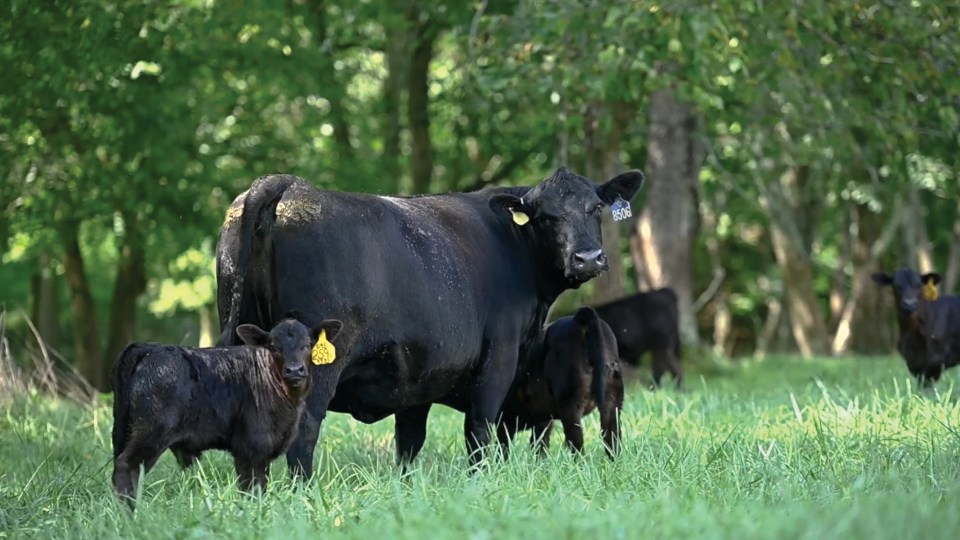Preweaning and weaning vaccination efforts that pay off
By Dr. Che Trejo
The management practices and health protocols implemented during the preweaning and weaning phases have a huge impact on calf health – as well as fall profits.
Merck Animal Health partners with Superior Livestock Auction and Kansas State University to evaluate the management decisions, programs and health protocols that drive the price per pound paid by buyers. This auction dataset includes information from over 2.5 million head of calves.
The data shows calves vaccinated with two doses of clostridial, two doses of five-way modified live viruses, at least one dose of a Mannheimia haemolytica and/or Pasteurella multocida vaccine and weaned at home for 45 days prior to delivery added $48 more per head than those receiving only one dose of each of the three vaccines and not weaned at home.1

The upside of weaning at home for 45 days is that it could add an additional 45 pounds or more, which is not accounted for in the premium.
A five-way vaccine is foundational to respiratory protection and a successful preconditioning program. It’s important to work with your veterinarian to select the vaccine that is the best fit for your calves. They likely will consider:
- If a modified live vaccine (MLV) or a killed vaccine (KV) is the right choice. Factoring into this decision is the vaccination history of the mother cow when vaccinating a calf at side as well as the marketing program requirements.
- Vaccines that offer long-lasting protection against a broad spectrum of respiratory pathogens. A respiratory vaccine should provide protection against infectious bovine rhinotracheitis (IBR), bovine viral diarrhea (BVD), parainfluenza 3 virus (PI3) and bovine respiratory syncytial virus (BRSV). Many programs require vaccinations for two of the most common causes of bacterial pneumonia, M. haemolytica and P. multocida.
- Pasteurella is a significant cause of bovine respiratory disease (BRD), especially among calves. It is the second most isolated bacteria recovered from lung samples at Midwestern diagnostics labs.2
- Veterinarians will also look at studies evaluating the duration of immunity that vaccines provide for each of the pathogens.
- How the vaccine will impact calves. Ideally, you want a strong immune response without setting calves back, such as going off feed or suffering productively. Veterinarians will consider the endotoxin levels of vaccines.
If you are looking for an MLV vaccine option, ask your veterinarian about BOVILIS® VISTA® ONCE SQ. It has been extensively studied and demonstrates long-lasting coverage against six viral and two bacterial respiratory pathogens, including both P. multocida and BVD Type 1b3 – two crucial pathogens that not all vaccines are effective against.
Your veterinarian can also advise on vaccine timing. It has been well documented that abrupt weaning causes stress, which results in reduced function of the calf’s immune system and impaired ability to fight disease. If the calf is vaccinated during this time, its ability to respond properly to a vaccine is limited.
Vaccinating calves prior to weaning allows a calf’s immune system to appropriately respond to the vaccine while on their cow. It also primes their immune system for a better response to a booster dose of vaccine.
Consult with your veterinarian to determine the most appropriate testing for persistently infected (PI) BVD in your herd. PI animals are particularly harmful to cattle herds. They may show no clinical signs of the disease yet shed the virus continuously to surrounding animals. A tissue sample – typically an ear notch – is taken, placed in a tube with proper animal ID and sent to a laboratory for testing.
Preconditioning programs, like PRIMEVAC™ by Merck Animal Health, provide a clear guide of the steps needed to give calves the best start at preweaning and weaning, including respiratory and clostridial vaccinations. Merck Animal Health also offers a Herd Health Manager tool at HerdHealthManager.com to easily document vaccination, parasite and reproductive protocols, as well as create a veterinary-certified health history to use at sale time.
Work with your veterinarian
Focus preweaning and weaning vaccinations for calves on prevention of respiratory disease. Your veterinarian is the best resource you have to identify the pathogens and disease challenges that are most important in your area. Work with your veterinarian to build a health protocol specific to your herd.
References
- Superior Livestock Auction Data 2021-2022.
- Merck Animal Health Final Study Report. MS-MDR-KSU-1-14. 2015 surveillance of antimicrobial resistance in bovine respiratory pathogens isolated from U.S. cattle.
- Based on review of CVP data as of May 22, 2022.
Find more content for your beef operation.
About the author

Che Trejo, D.V.M., M.S.
Cattle Technical Services Manager,
Merck Animal Health
